Hardware:
Software:
Developpement:
Gallery:
|
BOB4 - Autonomous indoor helicopter UAV
Sensors
Inertial Measurement Unit :
This IMU (Inertial Measurement Unit) is analogic. It delivers 6 analog signals : 3 accelerations, and 3 angular rate (gyro) signals.
I chose this IMU because it was at the beginning of the project (dec 2008) the most compact and affordable IMU. The sensors inside are not high quality. The accelerometer are quite bad: the offset error vary a lot with time and temperature. This is quite annoying.
I don't use an IMU that gives numeric signals. All computing for IMU is made on the main microcontroller. I think that this is a better architecture than dedicating one microcontroller for IMU and a second for flight control.
For good computing inside IMU software part, I can inject variables that come from the flight-control part : throttle order for example. An observer works better if we inject such variables. For example, I can be sure that the UAV is laying flat on the floor, and compensate rapidly offsets of gyro if the throttle order and altitude are low. This is very helpfull.
|

|
Compass :
It is a 3D magnetic sensor HMC5843, that communicates via I2C.
It is essential to have a 3D sensor for such an application. 2D compass or 3D with integrated tilt compensation will not work with flying objects.
|
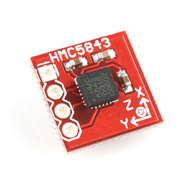
|
I had to put this compass away from magnetic disturbance generated by motors. The sensor is put at the end of a carbon pipe. The magnetic field induced by sensors is very disturbing: first it is quite strong, furtheremore it varies with the current driven by motors. Therefore, the magnetic field cannot be compensated with the sensor located close to the motors.
|
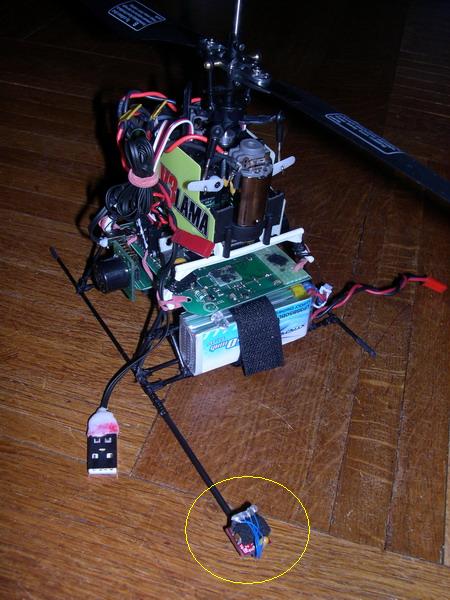
|
Sonars SRF02 |
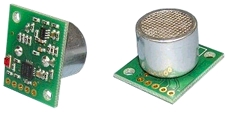
|
The sonars are well suited for such application. Their measurement cone is wider than IR rangefinders. This is helpfull: the sensor is more likely to detect walls and obstacles. The 4 sensors are distributed so that they measure 4 directions:
- under (altitude)
- left
- right
- front
These rangefinders only have 1 transponder. They are therefore more compact and lightweight. This is essential for a small UAV like mine!
|
Sensors Integration :
|
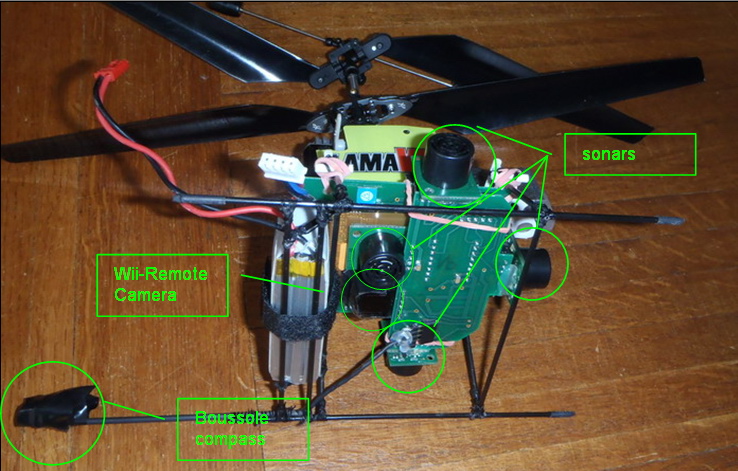
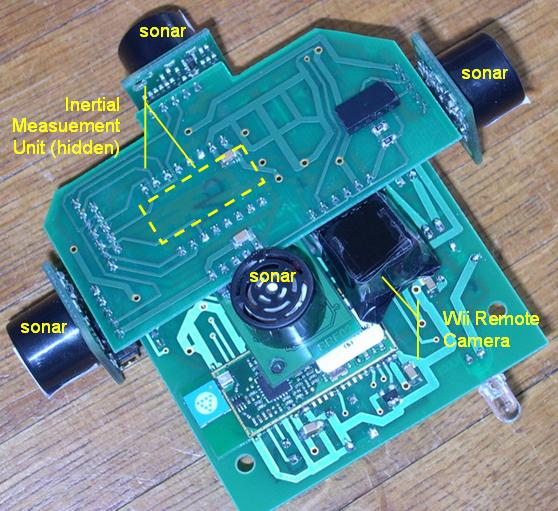
|
|
|
